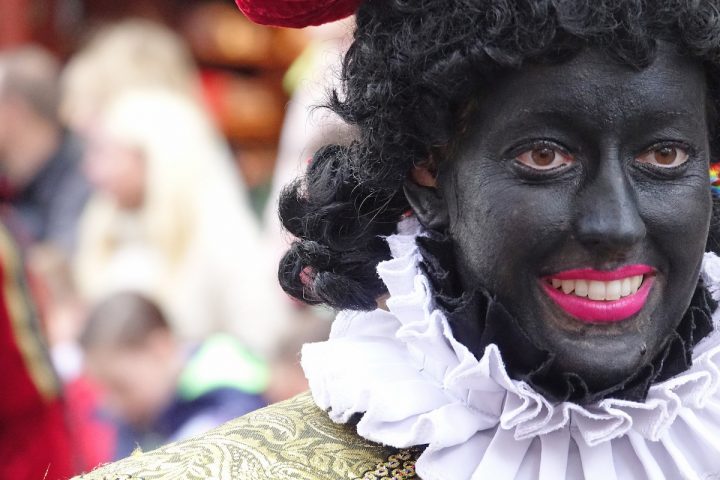The Year of Blackface in the Netherlands
Interview with Verene Shepherd, Chair-Rapporteur of the Working Group on People of African Descent.

Bert Werk, via Flickr CC.
In 2013, the rest of us began to really notice the longtime Dutch December tradition of Zwarte Piet (“Black Pete”), the blackfaced sidekick to Sinterklaas. Though a letter complaining of the racism inherent in the practice was sent to the Office of the United Nation High Commissioner for Human Rights way back in January of last year, and there have been annual protests for some time (not to mention a documentary in the works), it wasn’t until late fall that Black Pete hit the big time and people from Australia to Germany to India the UK to the US to Zimbabwe — and just about everywhere in between—really caught wind of the seriously problematic practice.
Verene Shepherd, University of the West Indies professor and Chair-Rapporteur of the Working Group on people of African descent, was but one of four signatories, however she bore the brunt of the Black Pete backlash after appearing on Dutch television. A majority in the Netherlands hold Black Pete dear (“66% of almost 10,000 people polled said there could be no Saint Nicholas festival without Black Pete”), but there are some who acknowledge the need to think about the figure from a context that takes into account the realities of colonial history. Here at Africa is a Country, Chandra Frank and Serginho Roosblad provided a rundown of the debate in November. Shepherd was kind enough to answer some questions about the issue.
How did you hear of the practice of Zwarte Piet?
Colleagues from the Netherlands brought this custom to the attention of the Working Group of Experts on People of African Descent from the very formation of the group; and I had heard about it before from Dutch members of the Association of Caribbean Historians.
There has been much talk in the Dutch (and other) press about the letter signed by yourself, Farida Shaheed, Izsak Rita, and Mutuma Ruteere. Can you talk a little about the events that led to your writing of this letter?
Yes; I know the media is really interested in this. We were approached by concerned groups in the Netherlands. We respond to complaints and public information about matters of concern to our constituents. We were asked to react as independent experts with particular U.N. mandates that relate to the concerns of minorities, groups that claim that they are discriminated against and people of African descent.

On Dutch television, you stated objections to the Zwarte Piet tradition and there was an outcry. Why do you think that the Dutch are so attached to this particular tradition?
From the feedback we have received, it would appear that this tradition is seen as harmless and an inoffensive children’s tradition. But the public debate, if carried out in a civil and respectful manner, could result in greater understanding among supporters and opponents; and explain why the description of “racist” has been attached to it in recent years.
I can’t find any information that suggests Zwarte Piet’s appearance was anything other than rooted in colonialism. He began to be depicted as black during the 19th Century. Can you talk a little about the relationship between this practice and colonialism?
This is a really good question. The appearance and behaviour of Black Pete represent stereotypes and caricatures of people of African descent. Historically, Blacks have been used as servants by colonialists; and even those that did not use them as such, developed negative stereotypes about them, rooted in colonial attitudes towards Black people as the “other”. These stereotypes still exist today and find expression in the image of Black Pete. Those who oppose – not Sinterklaas, let me hasten to add – but his Black Pete, argue that the image of Black Pete and the behaviour of Black Pete (as silly and dressed in Moorish clothes) are, in the 21st century, offensive.
In Canada and the United States, there has been much recent discussion about the racist naming of sports teams. The arguments for keeping racist names range from insisting on tradition, viewing the depiction of first nations people as positive, to demonstrating that the name isn’t offensive to many first nations people themselves. These arguments seem similar to those made supporting the Zwarte Piet tradition. Why do you think that this happens?
Our view is that no group should be stereotyped and disrespected in any part of the world when it comes to the use of names, practices and traditions. When this happens, we see the outcry against them. We have seen this in the opposition to blackface in the USA and the UK, opposition that led to the banning of the practice. In any event, when those affected (First Nation people, people of African descent, women, etc) tell us that they are offended, we should listen and make changes where possible. Culture is not static.
Nearing the end of 2013, there was a report of a politician who had attended a Dutch Christmas party in Nova Scotia and was photographed with a “Black Pete”. He insisted there was “no malicious intent”, much like how other recent instances of black face have met with a discussion of intention. Can you talk a little about this argument of intention?
Change takes time. Lack of awareness and lack of respect for others cause these kinds of behaviours and we need to find common ground and improve our relations with each other if we are to live in peace in our multicultural societies. This can come through intercultural dialogue.
The response in the Netherlands by those who see nothing wrong with Zwarte Piet and the hate mail unleashed on those of us who have opened the debate testify to the work that we still have to do in promoting culturally sensitive education and in eliminating racism, racial discrimination, xenophobia and related intolerance.



















